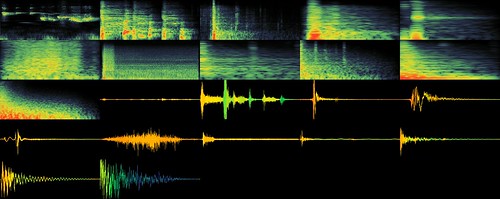
This isn’t my typical educational technology related post. I mean, it kind of is, but it really isn’t. I believe that we all learn and grow from experiences that happen both inside and outside of the classroom, so in essence, this post is about education and technology, but it’s also about more than that. It’s about a new opportunity, a new way to look at the things around me, a new way to approach literacy and how people interact with text, media and each other via social media.
This past week, I had my own opportunity to learn outside the classroom. A few months back, it was my good fortune to merge paths in the Twittersphere with @JGuyMAC, Director of Communications for the Mid-American Conference. Back in February, I was a guest of The University of Akron’s Men’s Basketball program at a pretty big game against Ohio University. The Zips had asked me to serve as a Social Media Correspondent on Social Media Day at the arena.
As a social media correspondent, two Zips fans will cover both the men’s and women’s games as members of the media, including insider access to pre and post game activities, media seating during the game and more.
Read the rest of this entry…
none

I’m trying to find the simplest way to produce an audio only file from the Screenflow file of a Skype conference call. Right now, I grab the screencast, which is usually 2 tracks; Screen/computer audio and the audio only of my USB mic. From there, I level out the 2 audio tracks and export as a .mov file. I then open the .mov in Quicktime 7 and export SOUND to AIFF, which gives me an .aif file. Then I import the .aif into GarageBand and then export as a .m4a file.
This seems all convoluted…is there an easier way? In the end, I can’t even find where I can export to a .mp3 file. Your suggestions would be appreciated. Thanks!
4 com

I’ve been working on authoring a Flash-based learning object using Articulate Engage for one of my grad classes over the past couple of days. During the development phase, I knew I wanted to include a couple of brief video segments to provide multi-modal opportunities to present the content. The one thing I wasn’t crazy about was using my voice for the narration. Sure I could, but the fact of the matter is I’m not really that crazy about listening to my voice over and over again during the editing process. As an alternative, I decided to experiment with using Text-to-Speech software.
For those who need a little background, Wikipedia provides this information about Text-to-Speech (TTS):
A text-to-speech (TTS) system converts normal language text into speech…An intelligible text-to-speech program allows people with visual impairments or reading disabilities to listen to written works on a home computer. Many computer operating systems have included speech synthesizers since the early 1980s.
Read the rest of this entry…
none


